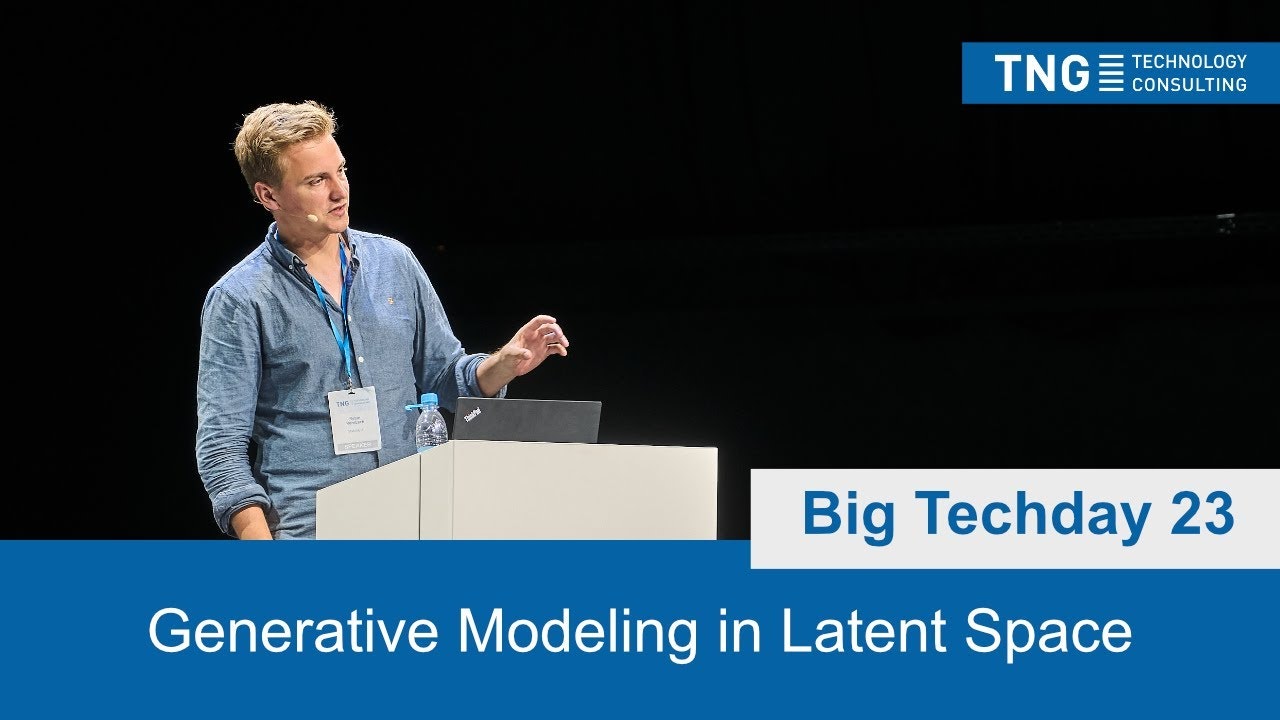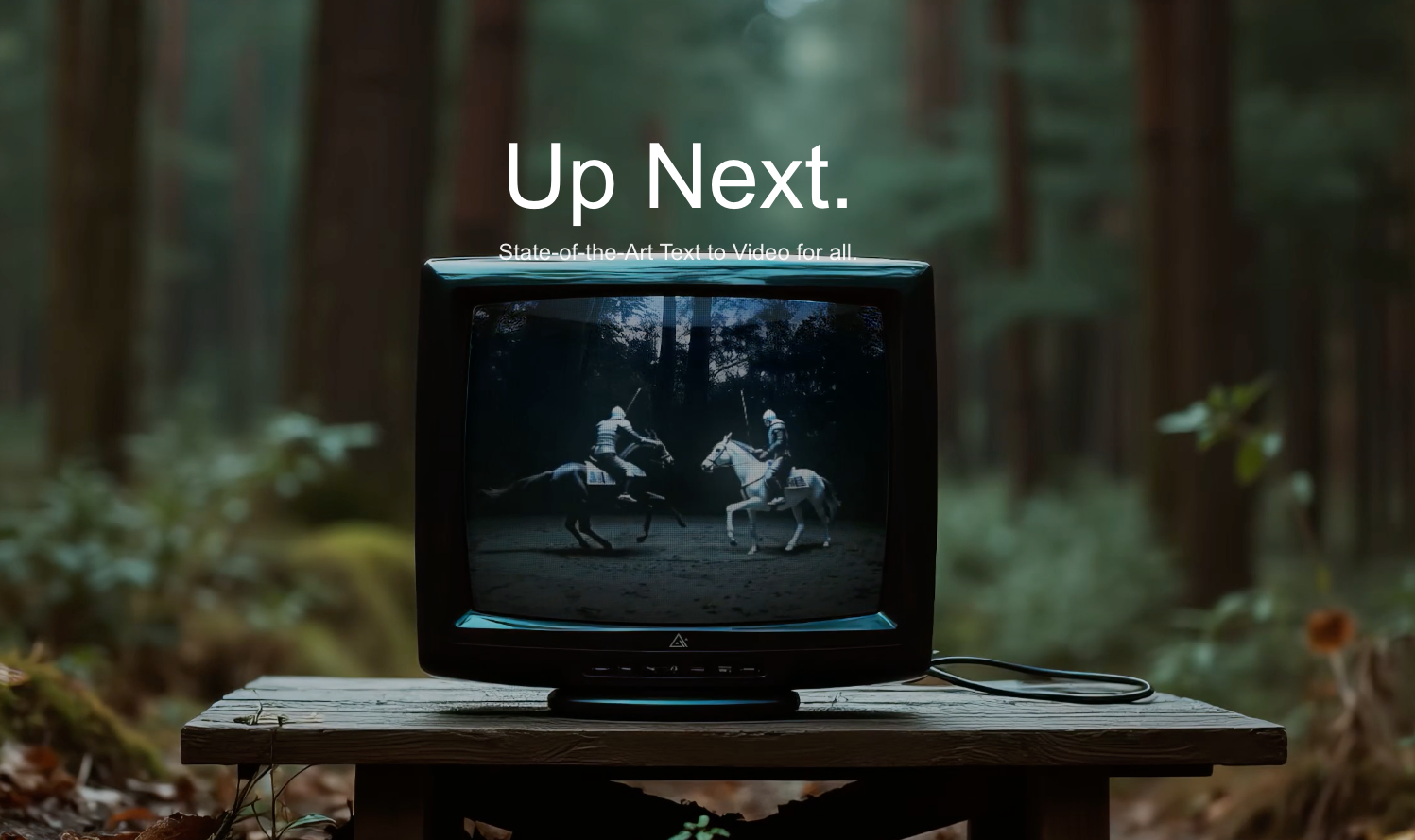At Swiss conference Start Summit in March, generative AI wunderkind Robin Rombach found himself in the middle of a crowd of people wanting to speak to him.
Rombach, who was dressed all in dark colours apart from an orange rucksack, is the cofounder of Black Forest Labs, the German startup which is fast becoming one of Europe’s most-talked-about AI companies.
The company emerged from stealth in August 2024, with a suite of text-to-image models that experts at the time said set new standards in AI-powered image generation.
The same month, Black Forest Labs raised a hefty $31m seed round from prolific US VCs General Catalyst and Andreessen Horowitz, plus Silicon Valley stalwart Y Combinator CEO Garry Tan — and also penned a deal with Elon Musk.
And yet, for all the buzz, including rumours of a $200m funding round on the horizon, the company — and its cofounder — eschews publicity.
‘Everyone wanted to poach Robin’
Rombach, who studied physics at Heidelberg University, before pursuing a PhD in computer science, is often credited as being one of the early architects of text-to-image models.
He worked with a small group of researchers who were focused on generative deep learning models, particularly text-to-image systems. That group included Patrick Esser, who would go on to become a cofounder of Black Forest Labs.
“We worked together at a tiny lab,” Rombach told an audience at startup conference Slush at the end of last year, describing their setup as “super resource constrained,” with just a few small GPUs to train the AI on.
That didn’t stop their ambition: “We wanted to compete with state-of-the-art models made at large institutions like Google and Nvidia,” he told the conference.
The combination of ambition and constrained resources led Rombach and Esser to develop “latent generative models,” a form which compresses imperceptible details in an image, meaning they work at a higher efficiency.

Photo: Big Techday/ Youtube.
Stability exodus
In 2021, Rombach moved to the Ludwig Maximilian University in Munich, along with his research team. A year later, he took a leadership role at London-based startup Stability AI, which commercialised the tech Rombach’s team had developed, releasing it as text-to-image model Stable Diffusion.
The hyped London startup secured unicorn status in 2022 when it raised a mammoth $101m seed round, led by Lightspeed and Coatue and including investment from former Google CEO Eric Schmidt.
The launch of Stable Diffusion in August 2022 was significant because the model is open source, meaning developers can iterate on it — something that they started to do with fervour as soon as it was released.
Summarising the excitement around Stable Diffusion, Rombach told the A16z podcast that he went on holiday for two weeks after the model’s release and, on his return, found most of the iterations he had planned to work on next had already been implemented by the open source community.
“A crazy ecosystem exploded around Stable Diffusion, which doesn’t happen if a model isn’t open source,” Andreessen partner Anjney Midha said of the model.
But, despite the hype around its tech, Stability soon hit troubled waters. A leaked pitch deck seen by Sifted raised questions about Stability overstating its AI capabilities, and it allegedly failed to pay staff and taxes on time, claims founder Emad Mostaque denied.
Although Stability helped finance the costs of training Stable Diffusion, it was not involved in the technical work of building the model.
By March last year — following a particularly turbulent 12 months in which Stability replaced its CTO, lost a VP of product, a VP of engineering, a VP of R&D and a head of research — Rombach also left the embattled company.
As one of the chief architects of the tech which made Stability’s name, his departure marked a significant turn for the company.
The move didn’t come as much of a surprise to his colleagues. “Everyone wanted to poach Robin,” says a former colleague who requested not to be named. “He is the maestro”.
Despite Rombach’s reputation, his former colleague says he likes to cut a low profile. “He’s just a guy that loves to create and build AI. Anything that detracts from that – like speaking to the press – isn’t needed. His satisfaction comes from being acclaimed by the AI community, where he’s considered almost omnipotent.”
To the Black Forest
In August last year, Black Forest Labs emerged from stealth. “Our mission is to develop and advance state-of-the-art generative deep learning models for media and to push the boundaries of creativity, efficiency and diversity,” the company posted on X.
Rombach had managed to convince a dozen of his former Stability colleagues to join the venture — including cofounders Andreas Blattmann, Jonas Julius Müller, Sumith Kulal, Tim Dockhorn and Axel Sauer. He also recruited former Northzone investor Sarah Nöckel as chief of staff, along with a host of technical talent.
Black Forest Labs currently has 30 employees, 12 of which are from Stability AI, according to LinkedIn data. It’s currently hiring for six technical roles in Germany and the US — including an image/video researcher and an image/video data engineer — all of which are fully remote.

The company is based in the small town of Freiburg, near to the Black Forest in the south of Germany. Investors who want to get onto its cap table are asked to visit the office and experience the forest, a large mountain range dotted with picturesque villages associated with the Brothers Grimm fairy tales.
The VCs that managed to get onto Black Forest’s $31m seed round speak glowingly about Rombach.
“If you ask anyone in the image generation field, be it Midjourney in the US, or anyone else, everyone will recognise Robin Rombach from South Germany,” says General Catalyst’s Viet Le.
Many European VCs missed out on the deal, and those who did say they were surprised they didn’t see the company in their deal flow before it emerged from stealth.
Other VCs say the size of the company’s $31m seed round meant it was simply too big for some European early-stage investors to get into, and Black Forest Labs’ conversations were therefore confined to multi-stage US firms.
Many of the most prominent VC firms investing in AI that Sifted reached out to said they didn’t know much about the company, and therefore couldn’t offer any meaningful insights about why it is seemingly so popular.
The only known European VC which has invested in the company is Germany’s Mätch VC, which pools funds from the continent’s family offices and entrepreneurs. It similarly likes to keep a low profile, cofounder Daniel Dilger told Sifted.
Black Forest Labs’ seed round is set to be dwarfed by the company’s next raise. In November, Bloomberg reported that Andreessen Horowitz was in talks to lead a $200m investment into the company, which could see it valued at $1bn.
The company declined to comment about the status of the talks.
Topping the Hugging Face charts
Black Forest Labs has released several versions of its model. Two are open-sourced, free for anyone to download, modify and use, as long as the product isn’t used commercially. Two other versions, ‘Flux Pro’, are licensed to commercial partners and delivered via an API.
Black Forest Labs’ Flux models have proved popular, topping download charts on platforms such as Hugging Face, and displacing established players like OpenAI’s Dall-E-3 as the leader in image generation. Flux accounts for nearly 40% of messages sent to AI models since January 2024, according to recent data from Poe, a platform that hosts over 100 AI models.

Rombach is a passionate proponent of open source models, and told Slush that this focus helps the company to attract talent, because developers tend to want to publish their work to show to the wider community.
Open sourcing also allows the company to watch people in the community explore a variety of use cases, iterate on the software and then incorporate that progress, Rombach said. “You basically outsource a lot of development.”
Open source alone doesn’t bring in cash, however.
One of the ways in which Black Forest Labs seeks to bring in revenue is through partnerships. Its most famous to date was signed with Elon Musk’s xAI in August 2024, in which its FLUX-1 model was used to power Grok, Musk’s AI chatbot.
The partnership thrust Black Forest Labs into fame, but also opened it up to scrutiny. The company’s model was criticised at the time for lacking important safeguards, with users able to generate fake images of Donald Trump smoking marijuana or holding weapons, among others.
On its website, Black Forest Labs says it implements safeguards such as filters in the training and content generation stages and is a member of the Internet Watch Foundation, a non-profit focusing on removing child sexual abuse material from the internet.
The Musk partnership has since ended — though it’s unclear when that happened and which party, if any, terminated the contract. xAI has developed its own image-generation models, announcing its first one made in-house, Aurora, in December 2024.
Black Forest Labs has other partnerships with companies such as French LLM maker Mistral, where its tech powers image generation on Le Chat; Deutsche Telekom, that is building a Telekom-specific model for producing photorealistic images for use in marketing and Adobe, which has made the company’s image models available within its ‘Project Concept’ and ‘Adobe Express’ applications for creators.
Next up: San Fran offices and text-to-video
So what’s next? International expansion, a move into video and closing that $200m round.
Rombach told Slush in November that the company plans to open offices elsewhere, naming San Francisco specifically — a move likely to please the US VCs on its cap table, but also likely to erk some who see the company as a homegrown European poster child.
Its next product release is set to be a text-to-video model; something the team also worked on at Stability AI — but a much bigger technical challenge than text-to-image.

“To solve video generation, a model needs to learn about the physical foundations of the world,” Black Forest Labs cofounder Andreas Blattman said in 2023, when he and Rombach were still working at Stability AI.
“Computationally it’s the next level because you have another dimension, which makes everything much harder. We like challenges, that’s why we’ve focused on it.”
The text-to-video race is hotly contested: in January, OpenAI released its offering, Sora, and Google rolled out its model, Veo, to subscribers this month. Those models are not open-source, so Black Forest could still look to occupy the space Stable Diffusion did with image generation — though there are other open source players, notably San Francisco-based startup Luma AI.
And, alongside international expansion and video modelling, the company faces the not-so-small task of closing its $200m funding round: a deal which could see Black Forest crowned a unicorn less than a year after it was founded.
Read the orginal article: https://sifted.eu/articles/black-forest-labs/


